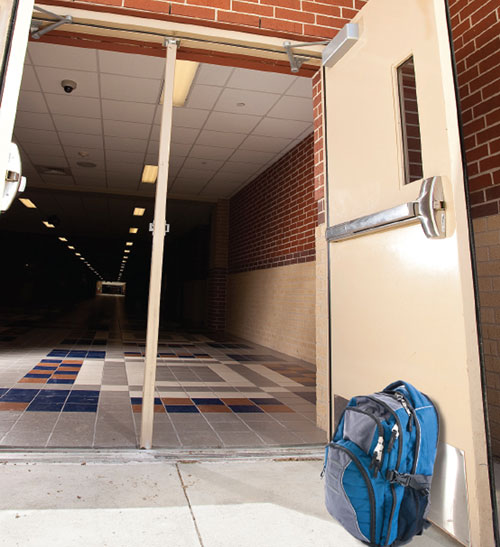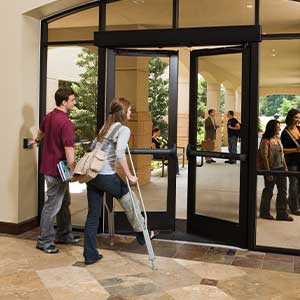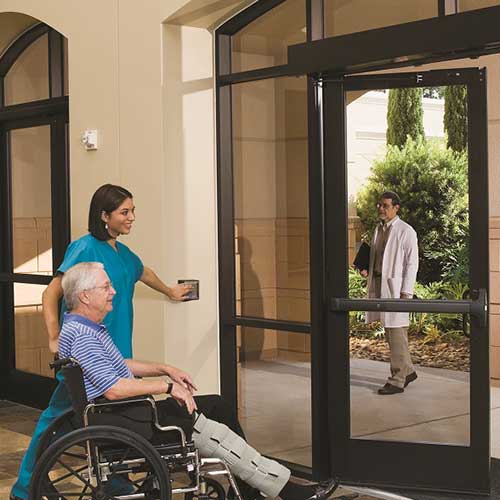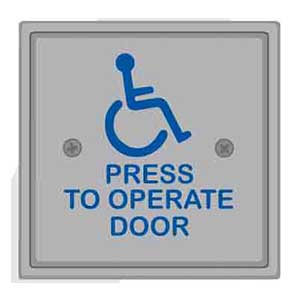
October is Energy Awareness Month, making it the perfect time for facility managers and building owners to focus on efficiency and savings. With colder weather just around the corner, facilities often see a spike in heating costs, utility bills, and energy waste. But with a few proactive steps – and the right building hardware – you can cut costs before winter hits, without sacrificing safety, security, or comfort.
1. Stop Wasted Energy at the Door
Doors are one of the most common sources of energy loss in a building. A single door left open, even briefly, allows conditioned air to escape and forces HVAC systems to work harder. Over time, this can translate into thousands of dollars in wasted energy.
- Install door prop alarms to prevent staff from leaving doors open “just for a minute.”
- Use exit alarms to discourage unauthorized use of emergency exits, which are often propped open for convenience.
- Seal air gaps by ensuring weatherstripping, mullions, and thresholds are in good condition.
2. Use Automatic Door Operators Strategically

Automatic door operators don’t just improve accessibility—they can also help regulate airflow in high-traffic areas. By ensuring doors open only when needed and close securely every time, operators help maintain indoor temperatures more effectively than doors that are frequently left ajar.
3. Prevent Drafts with the Right Mullions and Frames
Even small gaps around double doors can create major drafts. By using mullions designed for a tighter seal, facilities can reduce the amount of air that slips through, lowering both heating and cooling costs. Stronger mullions also increase security, creating a win-win for efficiency and protection.
4. Maintain Equipment for Peak Efficiency
Regular maintenance of your hardware can extend product life and improve performance:
- Test door operators to ensure smooth, reliable operation.
- Inspect alarms and batteries before colder weather hits.
- Check seals, hinges, and closers to prevent unnoticed energy leaks.
5. Educate Staff and Tenants
Even the best hardware won’t stop energy waste if people don’t use it properly. During Energy Awareness Month, consider:
- Posting signage near high-traffic doors reminding staff to keep them closed.
- Training employees on the cost impact of propped doors.
- Sharing your facility’s energy goals to encourage participation.
The Bottom Line
Energy Awareness Month is more than just a reminder—it’s an opportunity to take action before winter drives costs higher. By combining smart building practices with the right hardware, facilities can reduce wasted energy, protect budgets, and create a safer, more comfortable environment for everyone inside.









